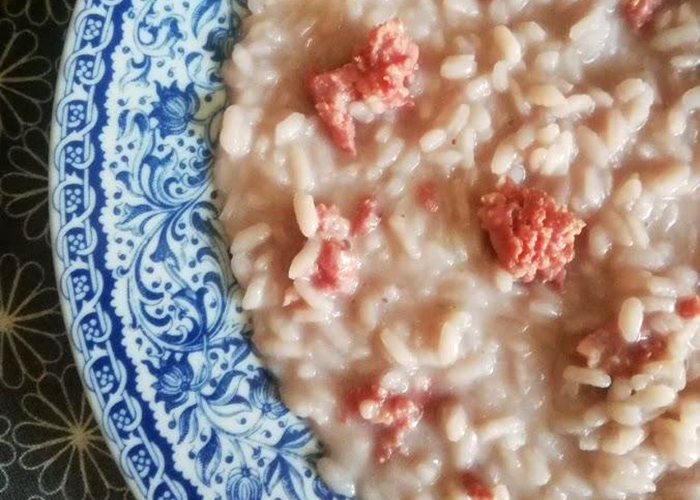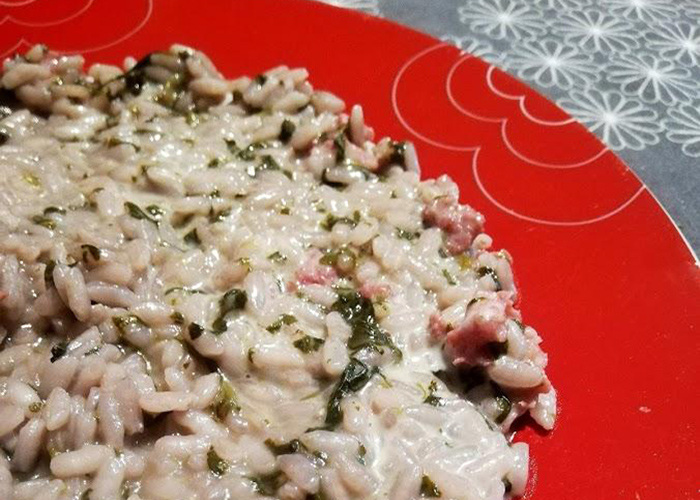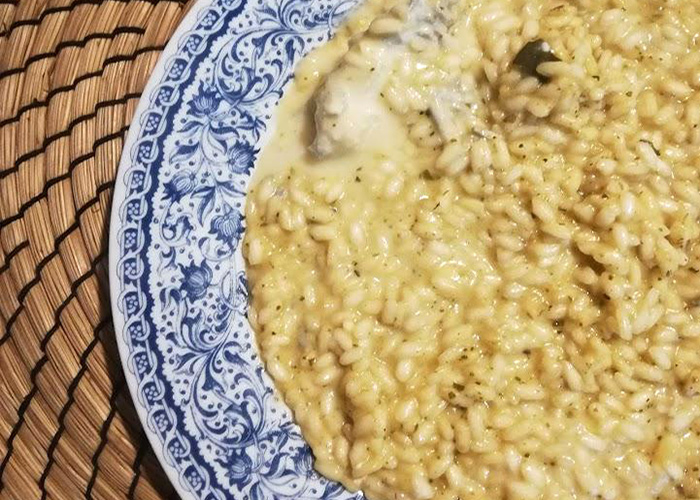SHARRYLAND


Where is

What is risotto?
It is an exclusively Italian preparation and typical of the "historical" rice-producing regions: Piedmont, Lombardy and Veneto. In fact, rice is widely used throughout Italy for various preparations, but true risotto requires these steps: first of all, the preparation of the broth, sautéing (although this step is not always necessary), toasting the rice, deglazing with wine (this, too, should be omitted in some cases), gradually adding broth until it is cooked and, finally, mantecatura.

Basic characteristics and variations on the theme
Risotto is special because, besides being delicious, it has a couple of characteristics that make it unique and inimitable. For starters, it has no translation into other languages, and then it is the only recipe that relies on a fair exchange between the rice and the other ingredients: the rice absorbs broth and flavors, releasing starch. Depending on the variety of rice you choose (there are about 200 in Italy, of which not all are suitable for risotto preparation) the final yield "al dente" (the separation and texture of the grains while cooking) and "all'onda" (the classic movement for mantecatura that does not stress the grains) changes.
Paniscia novarese is one of the classic risottos in the tradition of the Italian rice lands. It is a risotto with a vegetable base (cabbage, carrot, leek, etc. depending on the country, cuisine and cook) to which borlotti beans and crumbled salame della duja are added. Panissa from Vercelli is different, which has a base of fatty meat broth, wine, Saluggia or Villata beans and crumbled salame della duja. As is evident, the differences are not many, even in the name: the origin of paniscia novarese and panissa vercellese is panicum, the Latin name for millet, which was probably the main ingredient of this dish before rice was cultivated in these lands.

The very famous risotto alla milanese, on the other hand, originated in 1574: in Milan, Belgian glassmaker Valerio di Fiandra was working on the stained-glass windows of the Duomo. During his daughter's wedding celebration, saffron, a spice used by glassmakers to achieve the iridescent yellow coloring, was added to a white butter risotto. It was good, it was as yellow as gold, so the "yellow risotto" (as we call it in Novara) soon spread to the taverns and inns of Milan and the area.

A history of travel and flavor
Rice arrived around 1200 in the lands of Vercelli, Novara and Lomellina from the market in Milan, where it had arrived from southern Italy. From here it was sold as a medicine, spice or ingredient for desserts. Thus it is not intensively cultivated for food use. In a letter dated 1475, Galeazzo Maria Sforza sent twelve sacks of rice to the Duke of Ferrara saying that by sowing it he could get twelve per sack, far more than the yield of wheat. We are now certain that rice was cultivated systematically in Lombardy (and Vercellese and Novarese were Duchy of Milan then). Italian rice turned into a monoculture of many varieties, each suitable for the preparation of different recipes: risottos, timbales, salads, desserts, sushi, and so on and so forth.
Enter the Map of Italy's Undiscovered Wonders and find treasures where you least expect it... Inspire, Recommend, Share...
The Map thanks:
Enter the Map of Italy's Undiscovered Wonders and find treasures where you least expect it... Inspire, Recommend, Share...
Where is



